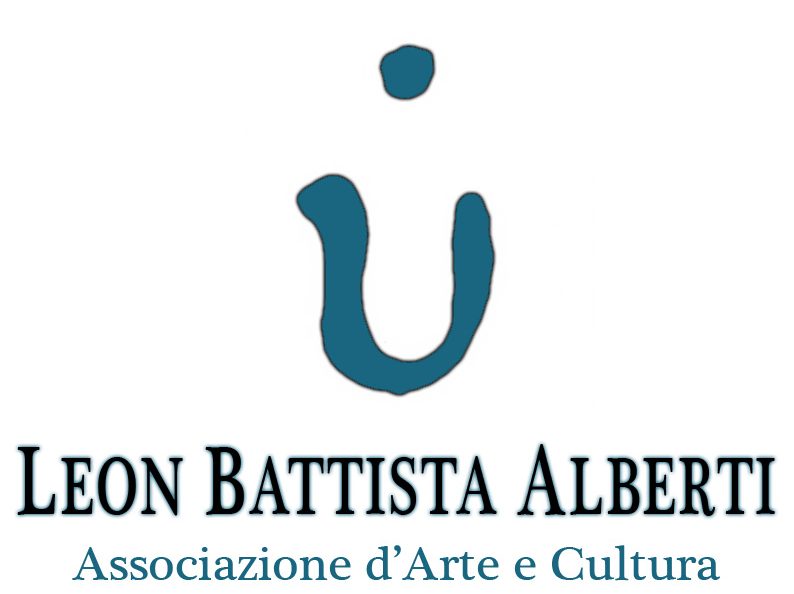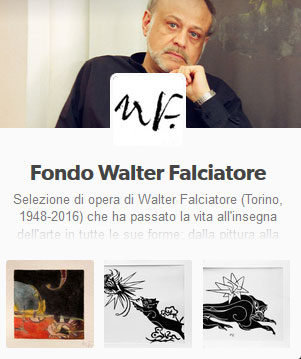La collaborazione con il Centro per la Giustizia Minorile per il Piemonte, la Valle d’Aosta e la Liguria è proseguita con la terza edizione del progetto “Exit Work” per la riabilitazione psico-sociale di giovani minori o adulti con percorsi di giustizia esterna al carcere per reati violenti. In questa edizioni i lavori sono stati tutti in setting individuale coinvolgendo cinque ragazzi provenienti dalla varie aree del Piemonte e coi quali sono stati realizzati brani rap e la seguente raccolte di racconti “Storie della mia vita” (sotto pseudonimo).
Storie-della-mia-vitaTag: pubblicazioni
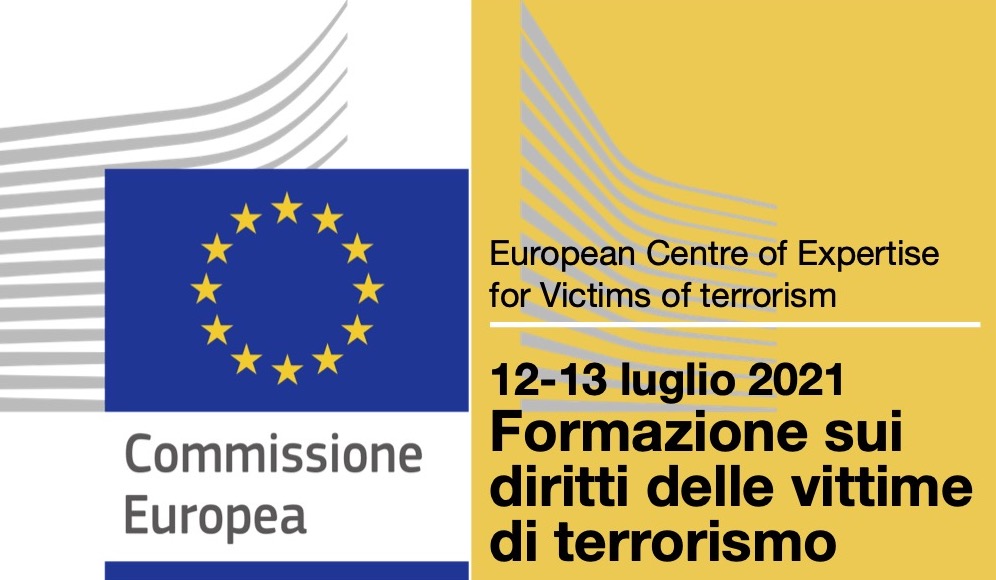
L’associazione, insieme a Rete Dafne Torino, è stata coinvolta nel progetto europeo “European Centre of Expertise for Victims of Terrorism (EUCVT- Centro di competenza dell’UE per le vittime del terrorismo)”. Il Centro, gestito da Victims Support Europe (VSE) in partnership con ARQ National Psychotrauma Centre, Association française des Victimes du Terrorisme e Fondation Lenval, è finalizzato ad per offrire competenza, orientamento e sostegno alle autorità nazionali e alle organizzazioni di assistenza alle vittime del terrorismo. In Italia, Luca Guglielminetti e Federico Mancini, hanno organizzato due giornate di formazione sui diritti della vittime del terrorismo per operatori italiani il 12 e 13 luglio 2021. Inoltre hanno collaborato all’edizione del manuale per l’Italia: “National Handbook on Victims of Terrorism: Italy”.
Si è quindi costituito un team di docenti provenienti dalla Magistratura, dall’Università, dalla Rete Dafne, da Psicologi per i Popoli Torino, dall’Associazione Leon Battista Alberti, dall’Associazione delle vittime della strage di Piazza Fontana e dall’ANCI, che ha erogato il seguente programma di formazione al quale hanno partecipato una cinquantina di operatori italiani del privato sociale.
Formazione-Sui-Diritti-Delle-Vittime-Del-Terrorismo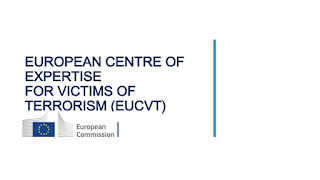
- Qui la descrizione del Centro di competenza dell’UE per le vittime del terrorismo (sito esterno)
- Qui il manuale per l’Italia, in inglese, National Handbook on Victims of Terrorism: Italy (sito esterno)

Il ruolo politico e sociale delle vittime nella lotta al terrorismo: i casi spagnolo e italiano è il titolo del symposium organizzato da Giorgio Gallino e Luca Guglielminetti nel quadro delle iniziative del GRIST (Gruppo Italiano Studio Terrorismo) e in collaborazione con l’Istituto G. Salvemini, la Fondazione V. Nocentini e l’Università di Torino, che si è svolto on-line il 18 Settembre.
Programma e contenuti
Symposium-sul-ruolo-politico-e-sociale-delle-vittime-nella-lotta-al-terrorismoVideo del symposium
KIT DI SUPPORTO

Coordinamento, con un poll di associazioni, per la creazione una serie di strumenti utili ai soccorritori e ai molti che in questa emergenza da pandemia stanno portando aiuto alla popolazione. Il risultato è stato il kit “Support the Supporters”: un ‘kit’ di supporto di secondo livello per coordinatori e operatori degli interventi psicosociali nella pandemia da Covid-19: un insieme di linee guida, raccomandazioni, analisi e strumenti per mitigare i rischi che possono compromettere la resilienza degli operatori pubblici e del terzo settore che stanno supportando la salute fisica e mentale dei cittadini e che a loro volta sono sottoposti allo stress e alle possibili traumatizzazioni secondarie. Esso è concepito in modo tale da essere facilmente consultabile, ma anche integrabile dagli stessi fruitori.
Il KIT rientra nell’azione “Support the Supporters” ed è uno dei prodotti del progetto “ICS – INSIEME CONTRO LA SOLITUDINE” coordinato da Psicologi per i Popoli Torino, finanziato dalla Compagnia di San Paolo e voluto da ESPRI’ in collaborazione con Psicologi nel Mondo Torino e l’Associazione Leon Battista Alberti.
KIT è il frutto di un lavoro interdisciplinare svolto da un Comitato Scientifico composto da:
· Maria Teresa Fenoglio, Presidente Psicologi per i Popoli Torino ed ESPRI’, docente Unito;
· Monica Agnesone, responsabile della psicologia Aziendale in ASL Città di Torino;
· Vittoria Ardino, psicotraumatologa, Presidente SISST- Società Italiana per lo Studio dello Stress Traumatico;
· Alfredo Mela, sociologo, Polito, Psicologi nel Mondo Torino (referente scientifico, ESPRI’)
· Massimo Mari, psichiatra, Asur-Area Vasta 2 , GORES Marche, (referente scientifico ESPRI’);
· Fabio Sbattella, Responsabile dell’Unità di ricerca in psicologia dell’emergenza (UniCatt Milano) (referente scientifico Esprì);
· Luca Guglielminetti, vittimologo e esperto di resilienza (UniBg, Ass. LBA), Coordinatore.
La vita delle forme
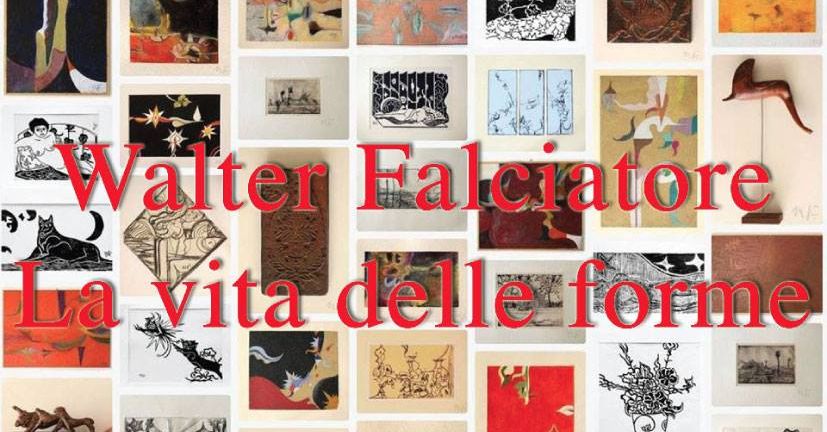
La mostra nasce dalla volontà dell’associazione Leon Battista Alberti (e gli animatori della pagina Fb “Wiz & Friends”) di far conoscere al pubblico il percorso artistico di Walter Falciatore (1948-2016), disegnatore, pittore, incisore, scultore ed editore brandizzese, evidenziandone sia gli aspetti formali che la raffinata manualità. L’ampia selezioni di opere permette di seguire un percorso, anche didattico, tra tecniche artistiche e artigianali poste da Walter Falciatore al servizio della forma e di quella facoltà umana di creare immagini, che è la fantasia.
Inaugurazione: venerdì 30 marzo ore 18.45 con ingresso libero.
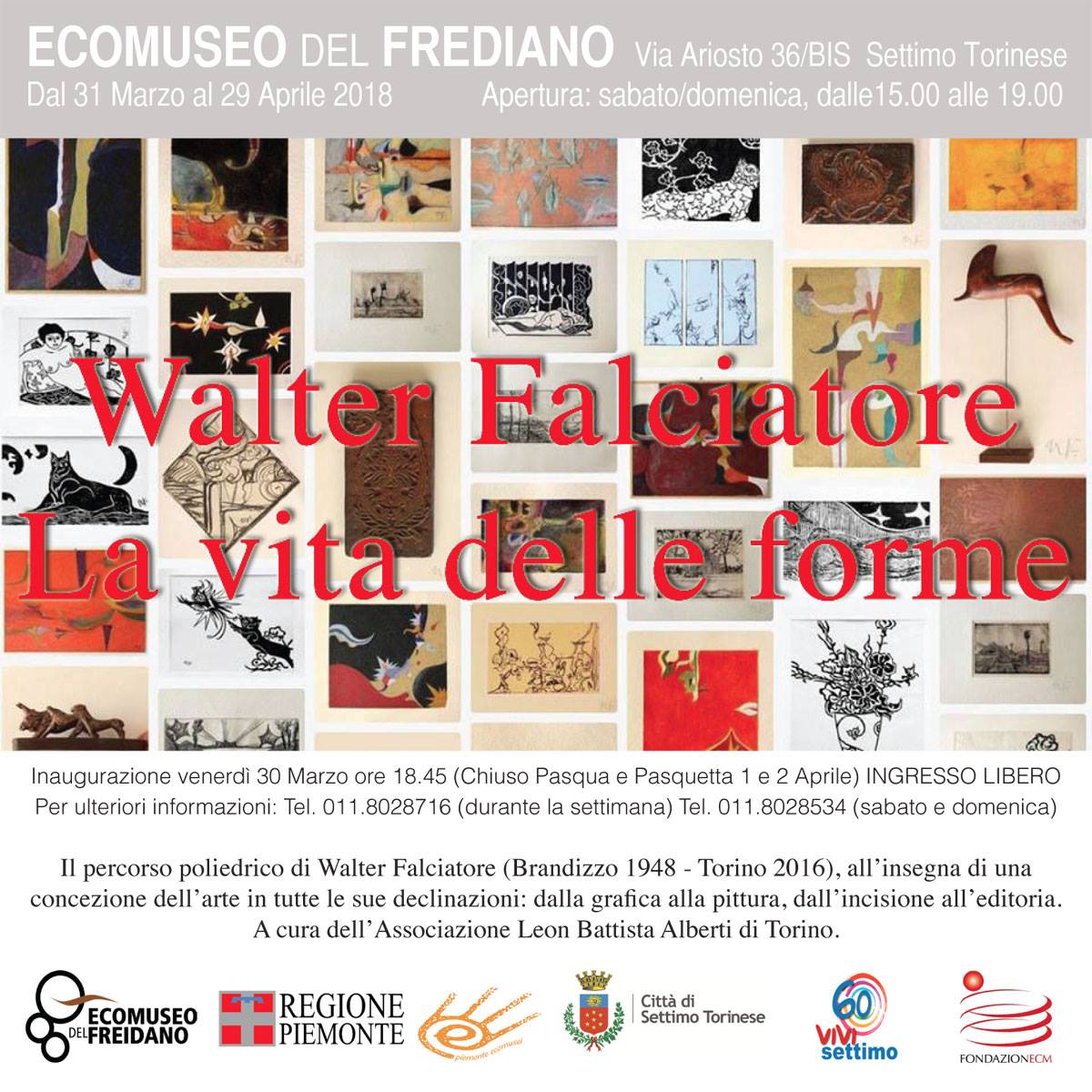
Introduzione all’esposizione: Walter Falciatore. La vita delle forme
Questa esposizione ospitata dall’Ecomuseo del Freidano di Settimo Torinese nasce dalla volontà dell’associazione Leon Battista Alberti di far conoscere a un più vasto pubblico il percorso artistico di Walter Falciatore.
Un percorso piuttosto peculiare in quanto orientato all’insegna di una concezione dell’arte in tutte le sue declinazioni – dalla grafica alla pittura, all’incisione – senza tralasciare il vario e multiforme ambito delle arti applicate, o minori. É infatti l’artista stesso a rendere esplicita la dimensione sociale del suo lavoro sul modello del movimento artistico inglese della seconda metà dell’800 fondato da William Morris, Arts and Crafts (“arti e mestieri”).
Così Falciatore si è cimentato per tutta la vita in plurime imprese nell’ambito dell’editoria, dell’artigianato e dell’arte, senza compiere una distinzione valoriale tra l’esecuzione di un quadro astratto, di una matrice intagliata per la stampa di tessuti o di una vignetta satirica.
La perizia artigiana e l’abilità manuale che caratterizzano le varie fasi del processo creativo delle sue opere acquistano anche un valore didattico, illustrato nel percorso dell’esposizione da schede di presentazione delle tecniche di incisione e stampa.
Nell’opera di Walter Falciatore le sperimentazioni tecniche vanno di pari passo con una sempre vivace ricerca della forma, sia astratta che figurativa. Anche in questo caso il suo percorso artistico non si piega a mode culturali ed artistiche: la dimensione astratta del suo lavoro non è di difficile comprensione. Come nella dimensione figurativa, la cifra comune risiede nelle linee della decorazione e della natura in un itinerario sempre ragionato, dotato di una logica e uno stile interni, il cui comune denominatore abbiamo definito la “vita delle forme”, dall’omonimo titolo del saggio di Henri Focillon:
“Non soltanto ogni attività viene scoperta e definita nella misura della forma che essa assume, dalla curva ch’essa inscrive nello spazio e nel tempo, ma anche la vita agisce essenzialmente come creatrice di forme. La vita è forma, e la forma è il mondo della vita”
Sebbene Falciatore non abbia avuto il tempo di giungere a una formulazione teorica sistematica della sua opera con un testo scritto, ci auguriamo che questa esposizione possa fornire il viatico più propizio alla scoperta del suo mondo artistico, nel quale la facoltà umana di creare immagini, la fantasia, trova una rara e coerente testimonianza.
I curatori e l’associazione:
Susanna Fisanotti, Gisella Cecchini e Luca Guglielminetti
Fotografie e video
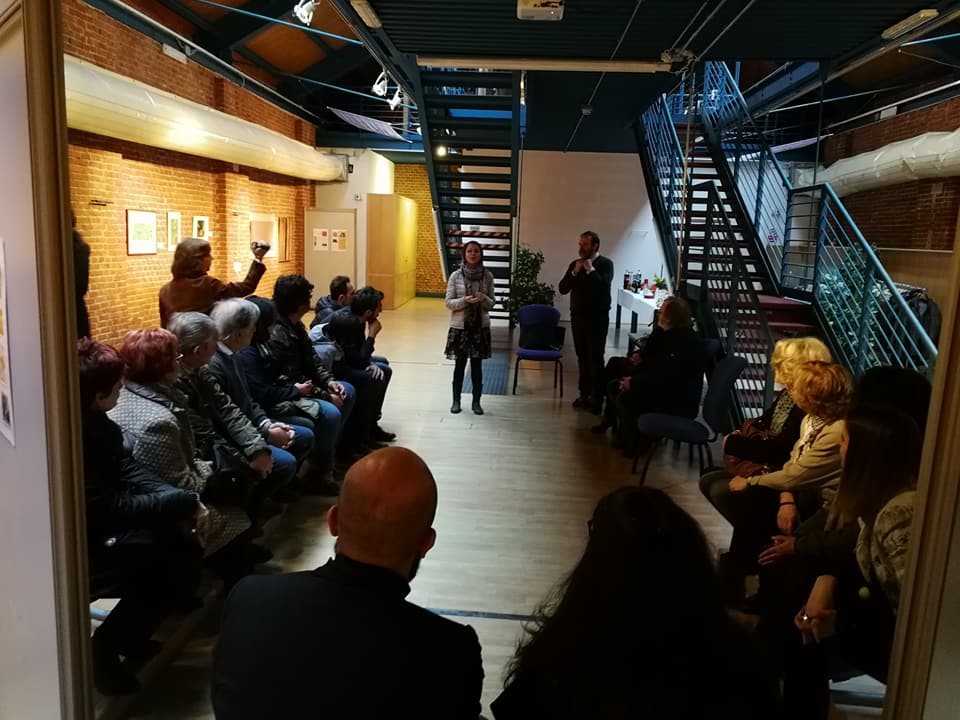
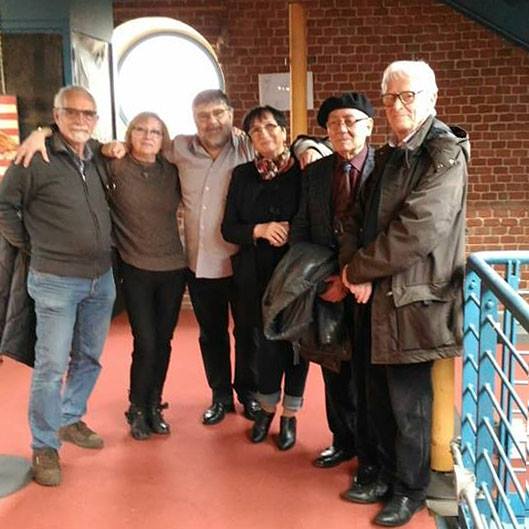
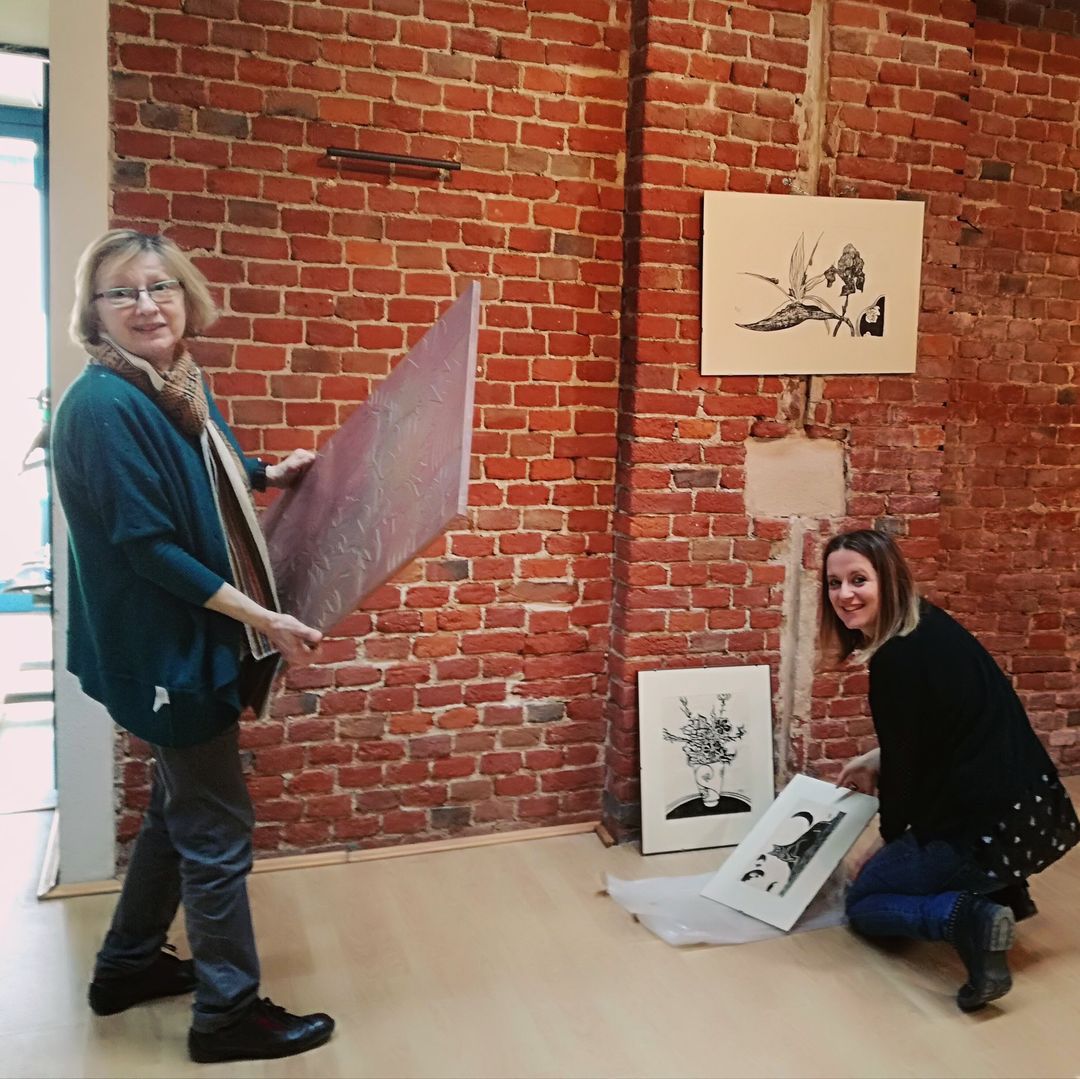
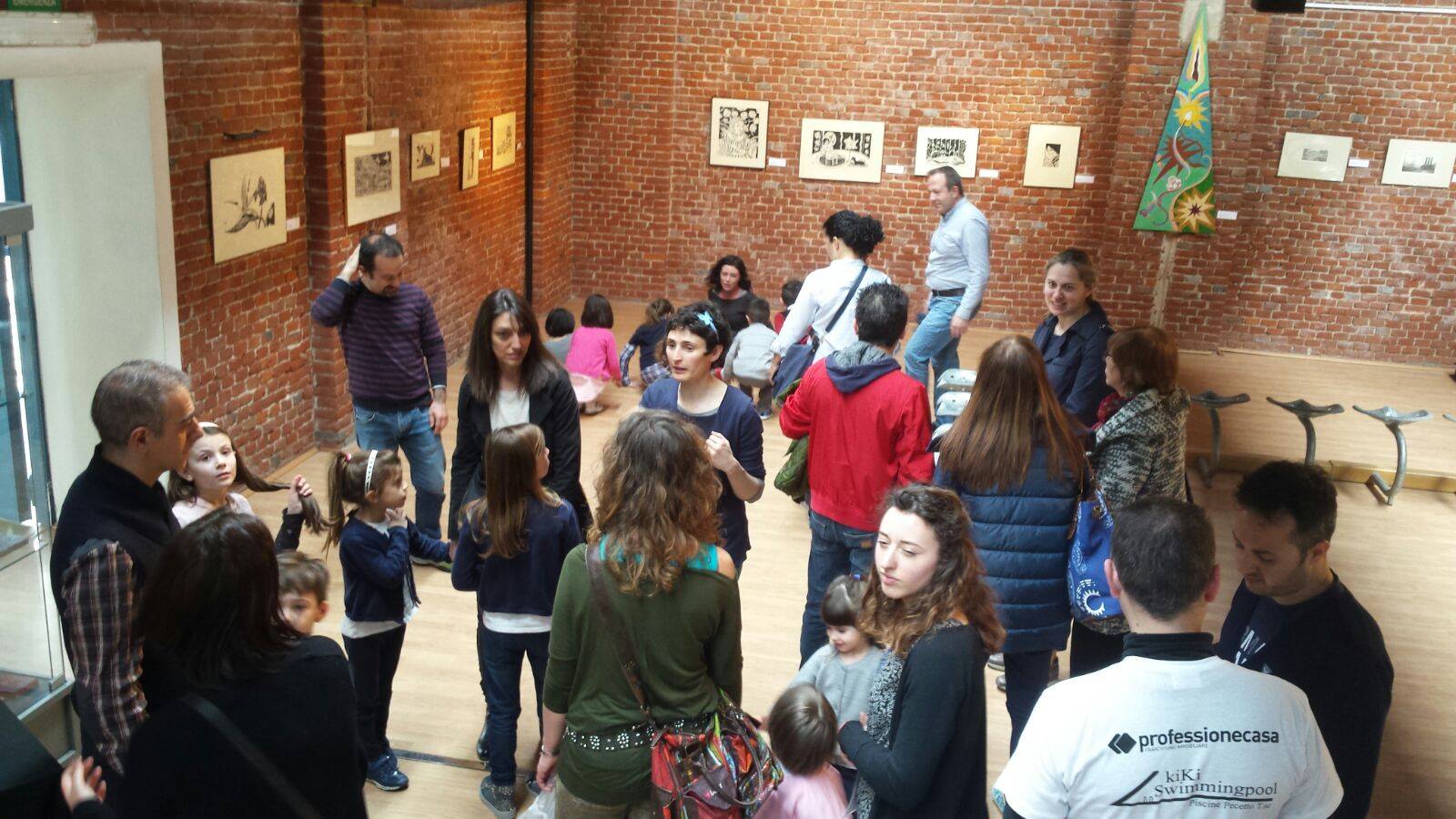
Catalogo e sito web

NUMEROS ANCIENS / TABLES DES MATIERES
«Patrimoine de l’industrie/Industrial Patrimony», n.1, anno I, 1999.
Sommaire/Table of contents:
Avant-Fropos de Henry Cleere; Editorial: Louis Bergeron TICCIH et l’Ecomusée de la Communauté urbaine Le Creusot-Montceaù les Mines : les cheminements d’une convergence;
Première Partie
Une euroconférence en 1997, “Patrimoine industriel et effets de taille”:
Olivier Kourchid Déterminants et paradoxes de la conservation des grands ensembles techniques et industriels;
1- Le Patrimoine des Grands Bassins Houillers:
Jean-Marc Deluze Maìtrise d’ouvrage et gestion du temps dans les projets de préservation du patrimoine industriel; Hans Kania Zollverein XII, Zollverein Colliery and a 13 km2 Neighboring Area. Preserving a Large Scale Area Inside the Ruhrgebiet ; Piotr Gerber The Project and the Realization of the Museum of Industry and Technology in Walbrzych ;
2- Le patrimoine des mines metalliques et de la metallurgie:
Bernard Colnot Un projet pour le haut-fourneau d’Uckange, Gyórgyi Nemeth The Miskolc-Diosgyör Ironworks: How to Go On; Eugene Logunov Iron Ore Mines and Ironworks of XVIIIth-XXth Centuries in the Urals;
3- Typologie des projets et des realisations:
Francesco Calzolaio Argentiera: per un piano di sviluppo controllato; Gabriella Maciocco Le parc-musée d’Abbadia San Salvatore: récupération du patrimoine industriel et revitalisation de la ville; Massimo Preite Estimation économique des projets de récupération du patrimoine minier en Toscane; Ôrjan Hamrin Preserving and Interpreting the Flatenberg Foundry (Ecomuseum Bergsiagen); Stuart B. Smith The Death of Industry yet the Growth of Heritage; José-Manuel Lopes Cordeiro Sauvegarde, réutilisation ou muséalisation du patrimoine industriel dans les banlieues: le cas de Porto; Franco Mancuso Safeguarding the industrial heritage and the needs of the city: case of Venice, Patrick Viaene Réaffectation du patrimoine industriel a des fins culturelles et nouvelles formes de muséologie: les tentatives de sauvegarde du patrimoine industriel de grande taille en Belgique; Gregorio E. Rubino et Antonella Marciano Patrimoine industriel, organisations a but non lucratif et nouvelles conceptions du Welfare; Olivier Kourchid Au-delà d’un colloque, méthodologie et théorie du gigantesque,
Deuxième Partie
Connaissance du patrimoine industriel mondial:
1- Le Patrimoine Industriel de L’Amérique Latine: Assumpcio Feliu i Torras Le patrimoine industriel dans les pays d’Amérique Latine: état des lieux et perspectives,
2- Patrimoine d’Extrême-Orient: Michel Cotte et al. Restoring and reusing historic bridges in Kyushu Island;
Comptes-Rendus.
«Patrimoine de l’industrie/Industrial Patrimony», n.2, anno I, 1999.
Sommaire/Table of contents:
Editorial de Louis Bergeron;
Première Partie
Actes du Colloque “Patrimoine industriel et société locale: identités, valorisation, emploi”, Ecomusée de la Communauté Urbaine Le Creusot-Montceau les Mines, 24-25 octobre 1996:
Claudio Zanier The valorization of silk heritage in Italy. Building viable tourist itineraries around historical uniqueness; Patrizia Chierici Patrimoine industriel et tourisme culturel: l’itinéraire piémontais de la soie; Giovanni Luigi Fontana II patrimonio industriale come risorsa per lo sviluppo: il Museo Territoriale dell’Industria Vicentina; Eusebi Casanelles i Rahola The Museum Interpretation of Industrialization: The System of the Museu de la Ciencia i de la Tecnica de Catalunya; Rainer Wirtz Das Rheinische Industriemuseum für Industrie- und Sozialgeschichte; Ivan Tognarini Archeologia industriale, storia della siderurgia e parchi in Toscana: successi, disfatte e rischi incombenti; Guido Vanderhulst La Fonderie, c’est une autre histoire;
Deuxième Partie
Musées et associations: expériences pratiques:
René Binette L’Ecomusée du fier monde a Montréal: un musée enraciné dans un quartier, Dennis Zembala The Baltimore Museum of Industry: A Working Museum for a Working City, Samuel Malpica L’Ecomusée de Metepec;
Troisième Partie
Connaissance du patrimoine mondial:
1- Patrimoine industriel de l’Afrique:
David Worth A Smoke Belching Congestion of Factories: Cape Town’s Neglected Industrial Heritage;
2- Patrimoine industriel de l’Americhe Latine: Humberto Morales Moreno Pueblos, Haciendas y Fàbricas en el trànsito a la modemidad. El valle de Atlixco (México), del virreinato al siglo XIX; Françoise Dasque – Rosario Vazquez Le centre ferroviaire de Matias Romero, au km 205 du ferrocarril nacional de Tehuantepec. Eléments pour la conservation du patrimoine industriel mexicain;
Quatrième Partie
Atlas des grands sites:
Maria Teresa Maiullari-Pontois Utopia e filosofia sociale; teorie e realizzazioni: gli esempi di San Leucio, New Lanark e Guise;
Comptes Rendus.
«Patrimoine de l’industrie/Industrial Patrimony», n.3, anno II, 2000.
Sommaire/Table of contents:
Editorial de Louis Bergeron;
Première Partie
Patrimoine industriel, risques et réussites:
Piotr Gerber et Agnieszka Gryglewska The Demolition of the Historical Slaughter House in Wroclaw. The Main Issues Concerning the Industrial Heritage in Poland; Antonella Caroli Gli Hangars del Porto Vecchio di Trieste; Keith Falconer Swindon’s head of steam, the regeneration of the GWR’s Works; Eric Delony Bibliographic Essay, 30 Years Documenting Engineering & Industrial Heritage through HAER Publications;
Deuxieme Partie
Expériences pratiques et projets:
Dimitra Babalis Conservation and Development of Industrial Sites in Lucca: the full integration of the Royal Tobacco Manufacture within the Planning Process; Dimitra Babalis L’ecomuseo della carta a Pescia, Valorizzazione del sistema produttivo e riassetto ambientale nella Valle; Evelina Calvi Paesaggi d’acqua, un progetto per la valorizzazione della rete dei Canali Cavour; Georges Pessis Des images en quête d’un lieu, les archives du film d’entreprise;
Troisième Partie
Connaissance du patrimome mondial:
Patrimoine industriel des Etats-Unis: Emory Kemp The Wheeling Suspension Bridge (Ohio);
Quatrième Partie
Atlas des grands sites:
Gracia Dorel-Ferre Les colonies industrielles catalanes; Maria Teresa Maiullari-Pontois Les villes ouvrières de l’Italie du Nord;
Comptes Rendues.
«Patrimoine de l’industrie/Industrial Patrimony», n.4, anno II, 2000.
Sommaire/Table of contents:
Editorial de Louis Bergeron;
Première Partie/Part one
Archéologie et mise en valeur des sites miniers et métallurgiques:
lan Cowburn The Mining Archaeology, Conservation, Research and Interpretation Policy in France; José Eugenio Villar El Patrimonio Industrial en el Bilbao Metropolitano, un recurso a utilizar para un Desarrollo Sostenible; Veronica Fabbri The Sulphur-Mining History in Perticara, the Scheme and Development of a Museum;
Deuxième Partie/Part two
Expériences pratiques et projets: muséologie industrielle en Méditerranée:
Margarida Ruas Dos Santos Preservation of a Historic Heritage, EPAL Water Museum as a Cultural, Environmental and Educational Communication Aid; Patrizia Moreno e Giuseppe Cini II Progetto di un nuovo Centro d’Arte Contemporanea nelle ex Officine Galileo di Firenze; Massimo Preite II Recupero dell’Archeologia Industriale a Firenze: il nuovo Centro di Arte Contemporanea nell’ex-meccanotessile di Rifredi; Daniela Mazzotta An Intervention for Rehabilitation : the Venetian Conterie; Christina Agriantoni Valorisation du Patrimoine Industriel de Hermoupolis: projets et premières réalisations; Antonella Marciano Sauvegarde du Patrimoine Industriel et organisations a but non lucratif en Italie: trois exemples de synergie;
Troisième partie/Part three
Connaissance du patrimoine mondial:
lan Jack The Heritage of Primary Industry in Rural Australia; Peter J. English Industrial Heritage in Kenya;
Comptes Rendus.
«Patrimoine de l’industrie/Industrial Patrimony», n.5, anno III, 2001.
Sommaire/Table of contents:
Editorial de Louis Bergeron;
Première Partie/Part one
Politiques nationales du patrimoine industriel:
Jacek Jaskiewicz Toward a Polish Strategy of Industrial Heritage Conservation; Erik Nijhof Industrial Culture in the Netherlands: The Dutch Institute for Industrial Heritage (PIE) and its Aftermath; Daijiro Kitagawa Travaux d’inventaire du patrimoine industriel au Japon; Vyatcheslav Pogudin Industrial Monuments in the Cultural Policy of Municipal and Regional Authorities of the Middle Urals;
Deuxième Partie/Part two
Connaissance du patrimoine industriel mondial:
Louis Bergeron Bridges Across the Atlantic: Mining Heritage on both Sides of the Ocean; Gino Papuli Da strumento a monumento. Il salvataggio della grande pressa delle Acciaierie di Terni; Geneviève Dufresne Akerselva: une réhabilitation exemplaire de la vallée de la rivière Aker, berceau de l’industrie a Oslo (Norvège); Ewa Bergdahl Re-using Industrial Plants in Sweden: Some examples, Waiting for new Functions; Michael Mende The Bremen City Ports and their Architecture;
Troisième partie/Part three
Atlas des grands sites:
Eusebi Casanelles i Rahola Saltaire, the English XIXth century Model Industrial Settlement; Maria-Teresa Pontois Pullman City: a North-American Company Town, Louis Bergeron Les Cités ouvrières Krupp a Essen;
Comptes-Rendus.
«Patrimoine de l’industrie/Industrial Patrimony», n.6, anno III, 2001.
Sommaire/Table of contents:
Editorial de Louis Bergeron;
Première Partie/Part one
Premier Colloque de la Section Textile de TICCIH, Terrassa, mars 2001:
Keith Falconer Understanding and Evaluating the Sites of the English Textile Industry; Jeppe Tônsberg Workers’ Houses and Social Institutions at Brede Cloth Mill, Denmark; Bartosz Marek Walczak Ksiezy Mlyn Textile Village: the Scheiblers’ “Jewel in the Crown”; Antoni Szram Aspects de l’architecture du complexe industriel et résidentiel de Ksiezy Mlyn a Lodz; Piotr Gerber The Protection of Historic Monuments of Textile Industry in Lower Silesia;
Deuxième Partie/Part two
Connaissance du Patrimoine Industriel Mondial:
Tuija Mikkonen Industrial Heritage in Finland; Janet Wright Coal; Gas and Clay: the Industrial Heritage of Alberta; Agnieszka Lorenc-Karczewska, Jacek Wesolowski, Wlodimierz Witkowski Le patrimoine industriel de la ville de Lodz; Cèsar Diaz Gomez & Ramon Gumà Esteve Pathology, Diagnosis and Recovery of Industrial Masonry Chimneys; Massimo Preite Le parc naturel minier de Gavorrano;
Troisième partie/Part three
Le Patrimoine Industriel du XXe siècle:
Antonio Monte II problematico salvataggio di un grandioso e raro edificio in legno; il “Magazzino Super” ex Montecatini di Brindisi; Francesco Niri L’altra cascata; Ippolita Romeo La centrale termoelettrica Montemartini; Cristina Franco Luoghi di riconversione: il Lingotto come esempio;
Compte-Rendus.
«Patrimoine de l’industrie/Industrial Patrimony», n.7, anno IV, 2002.
Sommaire/Table of contents:
Editorial de Louis Bergeron;
Première Partie/Part one
Le destiti du patrimoine industriel des grands ports mondiaux:
Andis Cenis Liepaja Military Harbour “Karosta” 1890-2001; Aida Stelbdene The Klaipeda Harbour: Losing Its Industrial Patrimony?; Caspar Jørgensen The Port of Copenhagen: from History to Preservation; Dirk J. Peters Industrial Heritage in the Harbour of Hamburg; Michel Croguennec L’influence anglaise sur l’aménagement des ports français au XIXe siècle: l’exemple des docks-entrepôts de Rouen; Dominique Ferriot Le Port de Marseille: un patrimoine a réinventer; Francesco Calzolaio Venezia e Marghera: città e porto; Daniela Mazzotta Les lieux et les traces du travail dans la lagune; Nikos Belavilas The Port of Piraeus from 1835 to 2004; Mark London La revitalisation du canai de Lachine à Montréal; John R. Stuart The Port of Vancouver; Daijiro Kitagawa Le patrimoine portuaire de Yokohama; Michèle Badia Bibliographie tirée des ouvrages de la Bibliothèque des Ingénieurs Civils de France a l’Ecomusée du Creusot-Montceau;
Deuxième Partie/Part two
Théories et pratiques de l’archéologie industrielle:
Emory KEMP The Artifact as Evidence: the Case for Industrial Archaeology; E. Baraldi, J.F. Belhoste, P.J. Campocasso, P.J. Comiti, G.E. Rubino La diffusion en Europe de la méthode indirecte bresciano-bergamasque pour la production de fonte du XVe au XIXe siede; Dimitra Babalis The Former “F.A.P. Railway” Through Some of the Pistoia -Mountain Sites. A project for a sustainable redevelopment of the post-industrial landscape and the re-use of the valuable built heritage;
Comptes-rendus.
«Patrimoine de l’industrie/Industrial Patrimony», n.8, anno IV, 2002.
Sommaire/Table of contents:
Editorial de Louis Bergeron;
Première Partie/Part one
Section «mines» de T.I.C.C.I.H:
Frode Saeland The Kongsberg Silver Mines, the Norwegian Mining Museum and Industrial Heritage Work; Karsten Secher et Jørgen Burchardt Early copper mining and smelting in Greenland – Pioneering enterprise in the arctic wilderness 1904-15; Geneviève Dufresne Apogée et déclin du charbon en France; Aron Cohen et Juan Francisco Zubiaur Un Enclave Minero en Andalucia Interior: Alquife (Provincia de Granada); Miles Oglethorpe Losing our Mines – Remembering the Scottish Coal Industry;
Deuxième Partie/Part two
Heurs et Malheurs du patrimoine industriel de grande taille: Maria Teresa Pontois;
Troisième partie/Part three
“Contributions Libres” – Histoire des Matériaux dans l’Architecture Industrielle: Elisabetta Spina Per una storia dell’architettura in ferro: il Mercato del Born in Barcellona (1878); Maria Luisa Barelli Architettura e costruzione degli edifici industriali biellesi fra Otto e Novecento;
Comptes rendus.
«Patrimoine de l’industrie/Industrial Patrimony», n.9, anno V, 2003.
Sommaire/Table of contents:
Editorial de Louis Bergeron;
Première Partie/Part one
Education et formation dans le champs du patrimoine industriel/Education and Training in Industrial Heritage:
Gustav Rossnes Documentation of Industrial Monuments course activity; Tiina Valpola Mapping Industrial Identities around the Baltic Sea; Lars Bergström How do We Preserve Knowledge and Skills when their Practitioners no Longer Exist?; Daniela Mazzotta A Master Degree in the Northern Italy Universities; Françoise Fortunet-Fiatte D.E.S.S. Gestion et Valorisation du Patrimoine Industriel;
Deuxième Partie/Part two
Patrimoine industriel: préservation et paysage Industrial/Heritage Preservation and Landscape:
Ewa Bergdahi Industrial Heritage Preservation in Riga and Norrköping; Normunds Treijs Verst-post Conservation and Re-use project in Latvia; Arthur Ruusmaa The Development of OU Shale Mines and industrial Settlements in Eastern Virumaa, Estonia; Mariano Torres Bautista Mexican Flour Mills between European Migrations and Modem Earthquakes; Sophia Labadi Importance, Conservation and Management of Chile’s Industrial Heritage; Leonardo Brogioni et Silvia Nencioni Charlestown Navy Yard: La riqualificazione dell’area industriale della Marina degli Stati Uniti; Maogan Chaigneau-Normand Patrimoine industriel et paysage dans l’industrie de la parfumerie en Provence;
Troisième partie/Part three
Suite de la publication du forum virtuel/The Virtual Forum Publication continued;
Comptes rendus/Books Review.
«Patrimoine de l’industrie/Industrial Patrimony», n.10, anno V, 2003.
Sommaire/Table of contents:
Editorial de Eusebi Casanelles (TICCIH president);
Première Partie/Part one
TICCIH Textile Section/Section Textile de TICCIH: la conférence d’Euskirchen (juillet 2003):
Michael Mende “Flagships”, “Giants”, “Pioneers”, and other Significant Historic Textile Sites in the North of Germany: Lower Saxony, Bremen, and the Thuringian Eichsfeld; Jean-François Belhoste Le patrimoine textile de la France: histoire, inventaire, propositions; Jeppe Toensberg Ways of technology transfer in the textile industry from Britain to the Continent in the years c.1849-c.1870; Robina McNeil The Manchesters of the World; Garry Miley Portlaw (Ireland), A Quaker Foundation; Michaela Ryškova Textile Industry in Moravia and Silesia; Guy Scherrer La conservation de machines anciennes en fonctionnement came vecteur pour la transmission des savoir faire: l’exemple de la création textile;
Deuxième Partie/Part two
Connaissance du Patrimoine Mondial/Discovering the World Industrial Heritage:
Antonella Marciano Architettura e dibattito critico sulla Stazione Centrale di Napoli (1861-1867); Joan Romulus Iron-working in Huneadora, Transylvania; Mariano Torres “Kulturbrauerei” Prenziauerberg (Berlin). Un exitoso caso de reutilizacion y integracion a su nuevo contexto urbano;
Troisième partie/Part three
A look at the destiny of some great industrial heritage sites in France/France: Interrogations sur l’avenir de quelques grands sites industriels:
Louis Bergeron Le patrimoine industriel et l’image; Chip Buchheit Le patrimoine du bassin houiller lorrain: une valorisation marquée par des logiques contradictoires; Karen Bowie The present situation of industrial heritage in Paris, XIIIe arrondissement; Maria Teresa Pontois Quoi de neuf à l’Ecomusée du Creusot-Monceau?;
Comptes rendus/Books Review.
«Patrimoine de l’industrie/Industrial Patrimony», n.11, anno VI, 2004.
Sommaire/Table of contents:
Editorial – Dinu BUMBARU, Secretary General, ICOMOS
Introduction to issue n° 11 – Maria Teresa PONTOIS
Première Partie/Part one
Conception et Pratiques du Patrimoine industriel en Europe /Industrial Heritage in Europe: Concept and Practices
La memoria del trabajo y el futuro del patrimonio, Juan José Castillo
En Italie: de l’archéologie industrielle au patrimoine industriel. Réflexions sur la méthode et sur l’enseignement, Gregorio Rubino
The Last Ten Years of The Trevithick Trust, Stuart B.Smith
Deuxième Partie/Part two
Section “Textiles” de TICCIH: la Conférence d’Euskirchen/TICCIH’s Textiles Section: the Euskirchen meeting
The Textile Mill in Britain – A Pilot National Charcterisation, Keith Falconer, with contributions from Miles Oglethorpe and Mark Watson
Significant Textile Sites in Germany, Detlef Stender
Troisième partie/Part three
Connaissance du Patrimoine Mondial/Knowing the World’s Industrial Heritage
Madrid recupera la Memoria del Trabajo: cuatro testimonos de su Patrimonio Industrial en el sudeste regional, Paloma Candela Soto
Connaître pour sauvegarder. Enquêtes sur le recensement et instruments pour l’inventaire du patrimoine industriel italien, Daniela Mazzotta
The Tesoni of the Novissima in the Arsenal of Venice. Methodology and Criteria in the Investigation of an Ancient Industry, Luigi Oliva & Andrea Sarno
Towards the “integrated conservation” of the “lime village”: Asvestochori, Thessaloniki, Greece, Georgia Zacharopoulou
Comptes rendus/Books Review.
«Patrimoine de l’industrie/Industrial Patrimony», n.12, anno VI, 2004.
Sommaire/Table of contents:
Editorial – Louis Bergeron, Maria Teresa Pontois
Première Partie/Part one
IInd INTERNATIONAL MEETING OF TICCIH MINES SECTION April 14-18, 2004, Velenje, Mežica (Slovenia)
Mirjam Gnezda, Idrija, A Town Of Natural Sciences And Technology; Ivana Leskovec, Idrija Municipal Museum: Maintenance and Presentation of the Technical Heritage of the Idrija Mercury Mine; Bojan Režun, Uroš Eržen,Idrija’s Geological Collections: The Preservation of Natural Heritage; Anton Zelenc, Idrija Municipal Museum: Restored Mine Machines And Devices of the Idrija Mercury Mine; Uroš Eržen, Through the History of Smelting Activities into the Technological Future
Uroš Eržen, Martina Peljhan, Anthony’s Main Road : The First Slovene Tourist Mine; Suzana Fajmut Štrucl, The Underground World: The Mežica Lead and Zinc Mine Turned into a Tourist Mine and Museum of Peca
Deuxième Partie/Part two
AN INTERNATIONAL CONFERENCE IN ZABRZE (Poland), 10-11 September 2004 – “The richness of industrial heritage as a challenge and attractive product for tourism and recreation”
Tomasz Wagner, Industrial Areas And Landmarks In The Cultural Landscape Of Upper Silesia; Tomasz Kita, The Bochnia Salt Mine Health Spa From History to the Present Day; Eugeniusz Paduch, Saving monuments of technique through adaptation; Marzena Lamparska-Wieland, Marcin Rybałtowski, Mining tourism in the Silesia Euroregion
Eight shorter contributions
Troisième partie/Part three
KNOWLEDGE OF INDUSTRIAL HERITAGE AROUND THE WORLD
Andreas Oehlke, Sidney Stott: Cotton Mills for the Continent. The introduction of the modern fireproof Lancashire Cotton Spinning Mill in the textile district of Münsterland (Germany)
Glenn Murray, Historic Mints: The Complex Industry Of Coin Manufacturing. The Royal Mill Mint of Segovia, Spain
Giuliano Pavone, A European Project for the Communication of Mining Heritage
Books Review
By Tuija Mikkonen, Maria Teresa Pontois
Books from France, Great Britain, Italy, Japan, Russia, Slovenia, Sweden
«Patrimoine de l’industrie/Industrial Patrimony», n.13, anno VII, 2005.
Editorial, Louis Bergeron.
Première Partie / Part One
The “state of the art” in industrial archaeology and industrial heritage in the Americas
Jaime MIGONE, Le Patrimoine Industriel du Chili
Belem OVIEDO, El patrimonio industrial en México. 20 años de estudio, rescate, reutilización y difusión
Gladys COLLAZO USALLÁN, El patrimonio industrial en Cuba. Una lucha diaria por su rescate y conservación
Graciela M. VIÑUALES / Jorge D.TARTARINI, Patrimonio Industrial en la Argentina
Paul-Emile CADORETTE, La revitalisation du canal de Lachine : bilan et perspectives
Eric DeLONY , Industrial Archeology and the Beginning of HAER
Deuxième Partie / Part Two
Knowing the World Industrial Heritage
Massimo PREITE, Géographie, Histoire et Représentation du Paysage industriel
Piotr GERBER, A Railway Museum in Silesia
János TÓTH, The Oil Industry Museum in Hungary
Miguel IDAWARE, Une compagnie minière canadienne veut détruire un village mexicain et ses 413 années d’Histoire
Luciano CRESPI- Federico OTOLENGHI, Sesto San Giovanni: fitting out the Urban Space: 25 Projects for the City of Factories
Troisième Partie / Part Three
Comptes-rendus / Books Review
«Patrimoine de l’industrie/Industrial Patrimony», n.14, anno VII, 2005.
Editorial, Louis Bergeron
Première Partie / Part One
Problematic, realizations and projects linked to the Mediterranean ports heritage
INTRODUCTION
City, port, port heritage :about the experiences of Marseilles and Naples – Galileo, a scientific partnership programme between Italy and France, 2001-2003, Rachel Rodrigues Malta and Gregorio Rubino
I –TERRITORIES
Port heritage : re-enchanting the port-city ? The Phocaean experience, Rachel Rodrigues Malta
Intermodal architectures. The inter-port system in Naples metropolitan area, Gaetano Fusco
II – HISTORY
Along the « waterfront » of the port areas : from the Palazzata of Messina to the via Marina project in Naples, Antonella Marciano
The port of Naples : the historical official iconography, Valentina Messana
The military and civilian port of Naples as industrial heritage, Roberto Parisi
The maritime passenger station of Naples in the context of the Parthenopean port reality, Elisabetta Spina
III – PROBLEMATIC
The Sea Port : Anatomy of the Approach, Gregorio Rubino
The Belle de Mai derelict area in Marseilles : a showcase in a working-class district, Brigitte Bertoncello
Deuxième Partie / Part Two
Back to industrial heritage tourism
Industrial heritage – an asset for tourism ? Ewa Bergdahl
The Bort-Neussargues line: a patrimony of railways in the highlands of the Massif Central (France), Pascal Desmichel
Troisième partie/Part three
By Louis Bergeron, Maria Teresa Pontois
Patrimoine de l’industrie / Industrial Patrimony, n° 15 / issue n° 15 anno VIII, 2006.
NATIONAL REPORTS presented on the occasion of TICCIH XIIIth CONGRESS Terni-Rome, 14-18 September 2006
Sommaire / Summary
Avant-propos/Foreword, Argentina, Australia, Austria, Belgium, Brazil, Chile, Croatia, Czech Republic, Denmark, Finland, France, Germany, Great Britain, Greece, Hungary, Italy, Japan, Mexico, Netherlands, Norway, Peru, Poland, Portugal, Romania, South Africa, Spain, Sweden, Switzerland, United States of America
«Patrimoine de l’industrie/Industrial Patrimony», n° 16 / issue n° 16, anno VIII, 2006.
Sommaire / Summary
Editorial
Louis Bergeron/Maria Teresa Pontois
Première Partie/Part One
Les musées industriels en Europe aujourd’hui : comment fonctionnent les réseaux /
Industrial museums in Europe today : how they are networking
Musées technologiques thématiques :
Le réseau des Musées de la Fondation Culturelle
de la Banque du Pirée, Aspasia Louvi
Le mNACTEC, plus qu’un réseau : un système territorial, Eusebi Casanelles i Rahola
Les écomusées du Piémont: projets et réalisations,
Chiara Ronchetta
The Westphalian Industrial Museum (WIM) and the Rhineland Industrial Museum (RIM). A decentralised museum concept and its regional and international networks, Eckhard Bolenz, Thomas Parent, Norbert Tempel
The Saxon Museum of Industry :
A critical interim evaluation on a museum association
in the pioneer country of German industrialization,
Achim Dresler, Jörg Feldkamp
Le réseau des Musées des techniques et cultures comtoises, Philippe Mairot
Deuxième Partie/Part Two
Connaissance du Patrimoine mondial de l’industrie
Knowing the World Industrial Heritage
Le patrimoine industriel de la Flandre, Patrick Viaene
L’architecture industrielle de Pétersbourg, Margarita Shtiglits, Boris Kirikov
Suomenlinna (Sveaborg). The Historic Dockyard:
A happy end for the time being, Tuija Lind
Transfer of technology in the construction of Tomioka Silk Mill, Toshitaka Matsuura
Troisième partie/Part three
Comptes rendus
«Patrimoine de l’industrie/Industrial Patrimony», n.17, anno IX, 2007.
Editorial, Louis Bergeron
PART ONE
INDUSTRIAL IDENTITY IN BORDER REGIONS OF EUROPE
FOREWORD
Tuija Mikkonen
Industrial development in Karelia at the Finnish-Russian border
Tuija Mikkonen & Terttu Nupponen
New Borders–New Order: Soviet Industrialisation of Lithuania in 1956-1985 and its Impact on Identity
Marija Drėmaitė
Managing Natural Resources at the North: Changing Styles of Industrialization in the USSR
Alla Bolotova & Dmitry Vorobyev
Some Particularities In The Industrial History Of Belgium, in relation to actual approaches to the industrial heritage movement in this country.
Patrick Viaene
PART TWO
KNOWLEDGE OF INDUSTRIAL PATRIMONY AROUND THE WORLD
Industrial Heritage in China. Its Past, Present and Future
Que Weimin
The Cathedrals of the Sea
Francesco Calzolaio
Sauvetage du musée minéralogique et valorisation du patrimoine minier de Trepca (Kosovo)
Pierre-Christian Guiollard
Modern Movement Across Borders: Factory Buildings in Germanyand in the Netherlands During the Interwar Period. Exchange, concept and design
Ingrid Ostermann
Ostrava Vítkovice Industrial Park
Helena Zemánková
Foreword
Louis Bergeron
PART THREE
BOOKS REVIEW by Ingrid Ostermann, Stuart Smith, Maria Teresa Pontois, Louis Bergeron
«Patrimoine de l’industrie/Industrial Patrimony», n.18, anno IX, 2007.
Editorial, Louis Bergeron
PART ONE :
International Transport & the Significance of the Pontcysyllte Aqueduct and Llangollen Canal
Pontcysyllte Aqueduct and the influence of British Canals, Peter WAKELIN
TICCIH and World Heritage, Stuart B. SMITH
The International Canal Monuments Study: part of the Global Strategy for a balanced World Heritage List, Stephen HUGHES
Blaenavon Industrial Landscape World Heritage Site Regeneration Benefits, John RODGER
The Holyhead Road and the legacy of Thomas Telford, Barrie TRINDER
The Telford-Jessop Canal in Scotland, John R. HUME
Thomas Telford – His Knowledge Legacy, Gordon MASTERTON
‘Best Adapted To The General Carriage’ Railways Of The Llangollen Canal, Their History And Archaeology, David GWYN
‘Images Bold And Thoughts Sublime’: The Cultural Landscape Of The Llangollen Canal, Barrie TRINDER, David GWYN
Recording the structures of the Llangollen Canal, Susan FIELDING
Conservation Management of the Pontcysyllte Aqueduct and Canal, Peter BIRCH
Conserving the Waterways Heritage, Nigel CROWE
The Forth Bridge: a Major Internationally Important Engineering Monument, Miles OGLETHORPE
Conclusions of the Pontcysyllte Conference, Stephen HUGHES
PART TWO:
Knowledge of the World Industrial Heritage
Paesaggio e Patrimonio Industriale
Il Masterplan del Parco Tecnologico e Archeologico delle Colline Metallifere, Massimo PREITE
Venezia: tracce della storia produttiva di Campo di Marte, Daniela MAZZOTTA
Anciennes usines : nouvelles affectations, viables et compatibles, Aspasia LOUVI
PART THREE
Books Review – Comptes rendus
«Patrimoine de l’industrie/Industrial Patrimony», n.19, anno X, 2008.
Editorial, Louis Bergeron
PART ONE / PREMIERE PARTIE
New Perspectives in Industrial Heritage/Nouveaux chantiers du patrimoine industriel
The history and heritage of natural resource exploitation in the Arctic and Antarctic:
the LASHIPA project
Dag AVANGO – Louwrens HACQUEBORD
Modern Whaling Industry in Spitsbergen as a tool for territorial claiming and
national sovereignty strives
Ulf INGEMAR GUSTAFSSON
Spitsbergen’s resources, Dutch entrepreneurs and Geo-politics
Hidde DE HAAS
PART TWO / DEUXIEME PARTIE
Evolving Cultural Landscapes/Les paysages culturels évolutifs
The evolving cultural-industrial landscape in Sesto San Giovanni (Italy)
Luciano CRESPI
Le paysage du Bassin Minier du Nord-Pas de Calais (France)
Marie PATOU & Massimo PREITE
Le Parc Géo-minier de la Sardaigne, un paysage culturel évolutif
Luciano OTTELLI
La Chaux de Fonds/Le Locle. (Suisse), die höchst gelegenen Städte Europas
Martin FRÖHLICH
PART THREE / TROISIEME PARTIE
Knowledge of the World Industrial Heritage/Connaissance du patrimoine industriel mondial
The Industrial Revolution in its European context
Barrie TRINDER
Industrial Heritage in Japan : A round view from Europe
Louis BERGERON
“The Aegean Eldorado”
Nikos BELAVILAS
Books Review – Comptes rendus
News from Koinetwork
Nouvelles de Koinetwork
«Patrimoine de l’industrie/Industrial Patrimony», n.20, anno X, 2008.
Editorial, Bénédicte SELFSLAGH, Secrétaire Générale de l’ICOMOS
PART ONE / PREMIERE PARTIE
TICCIH WORLD-WIDE PRESENCE: from the XIVth Congress to the building of new networks
PRĖSENCE DE TICCIH DANS LE MONDE: du XIVème Congrès à la création de nouveaux réseaux
Helmuth ALBRECHT and Bernd SIKORA, Industrialisation and Industrial Heritage in Saxony
– Industrialisation et patrimoine industriel en Saxe
Marie NISSER, Our Industrial Past And Present. Challenges in Training and Education
Le passé et le présent de notre industrie. Les défis de la formation et de l’éducation
Tuija MIKKONEN, Historic dockyards and maritime heritage: Suomenlinna, Helsinki
Docks anciens et patrimoine maritime: Suomenlinna, Helsinki
PART TWO / DEUXIEME PARTIE
LE PATRIMOINE INDUSTRIEL ET LA LISTE DU PATRIMOINE MONDIAL DE L’UNESCO
INDUSTRIAL HERITAGE AND THE UNESCO WORLD HERITAGE LIST
Maria del Carmen CAÑIZARES RUIZ, Almadén: An Exceptional Mining Heritage
Almadén, un patrimoine minier exceptionnel
Karima HAOUDY, Le site minier du Bois-du-Luc : un repère dans le patrimoine industriel – Bois du Luc Mining Site : a Landmark in Industrial Heritage
PART THREE / TROISIEME PARTIE
CONNAISSANCE DU PATRIMOINE INDUSTRIEL MONDIAL
KNOWING THE WORLD’S INDUSTRIAL HERITAGE
Rafael RODRIGUEZ DIEZ, Tunnels Of The Ancient Mining Railways (1850-1950): An Important Industrial Heritage – Les tunnels des anciennes voies ferrées minières (1850-1950: l’importance de ce patrimoine
Carlos J. PARDO ABAD, Restoration And New Uses For The Industrial Heritage Of Madrid Le patrimoine industriel de Madrid: Restauration et nouveaux usages
Manuel José DOS SANTOS SILVA, L’Université de Beira Interior et la préservation du patrimoine industriel de Covilhã / The University of Beira Interior and the preservation of industrial heritage in Covilhã
QUATRIÈME PARTIE – PART FOUR
Books Review – Comptes rendus
News from Koinetwork
Nouvelles de Koinetwork
«Patrimoine de l’industrie/Industrial Patrimony», n.21, anno XI, 2009.
Editorial, Bénédicte SELFSLAGH, Secrétaire Générale de l’ICOMOS
PART ONE / PREMIERE PARTIE
Koinetwork at the A.N.A.B.F. Conference / Koinetwork a la Conférence de l’A.N.A.B.F.
Geneviève DUFRESNE. La Vallée de l’Aker à Oslo. Patrimoine industriel et aménagement durable
Giorgio OLDRINI. Sesto San Giovanni entre passé et avenir. Pour une valorisation du patrimoine matériel et immatériel de la “Stalingrad italienne”
Livia LOFFI RANDOLIN. De la friche industrielle au patrimoine urbain: les enjeux à Sesto San Giovanni
Interview de Bernard PLATTNER, Agence Renzo Piano. Sesto San Giovanni – site ex Falk
Helena ZEMÁNKOVÁ. L‘ avenir du patrimoine industriel des villes moraves
Louis BERGERON & Maria Teresa PONTOIS. Amsterdam, Grenoble: deux villes en pointe face aux impératifs de l’écologie urbaine. Oslo, Zlin, Sesto San Giovanni :trois villes face à leur passé industriel
PART TWO / DEUXIEME PARTIE
Towards an extension of the World Heritage list /Préalables a un élargissement de la liste du Patrimonie Mondial
Eric DeLONY. What is a world heritage bridge ?
Elisa CALADO PINHEIRO. Politiques et pratiques de sauvegarde. La muséalisation du patrimoine industrielde la filière laine : le cas de Covilhã (Portugal)
PART THREE / TROISIEME PARTIE
Valter GIULIANO. Quindici anni di Ecomusei e Cultura materiale. La Provincia di Torino tra teoria e pratica.
Giovanni VACHINO. La “Strada della lana” da percorso culturale a risorsa per il territorio
Zuzana JACKOVA. Sugar industry in Moravia and Silesia
PART FOUR / QUATRIÈME PARTIE
Books Review – Comptes rendus
News from Koinetwork
Nouvelles de Koinetwork
«Patrimoine de l’industrie/Industrial Patrimony», n.22, anno XI, 2009.
Editorial, Louis BERGERON, Maria Teresa PONTOIS
PART ONE / PREMIERE PARTIE
Proceedings of the french-japanese workshop (Paris, 27-29 May 2009): “Cultural Heritage and Economy”
Actes du workshop franco-japonais (Paris, 27-29 mai 2009): “Patrimoine culturel et économie”
Louis BERGERON. Adresse de bienvenue.
Hirotaka NOSE. Les patrimoines industriels de la modernisation.
Federico OTTOLENGHI. Le patrimoine industriel de Sesto San Giovanni. Expériences et projets de réutilisation et réaménagement pour la croissance culturelle et économique.
Norbert MENDGEN. Le patrimoine industriel et son potentiel économique pour l’avenir. Trois exemples de “bonnes pratiques” empruntés aux régions limitrophes de la Lorraine (le Carreau Wendel), de la Sarre (les hauts fourneaux de Völklingen) et du Luxembourg (Belval).
Aspasia LOUVI-KIZI. Le partenariat entre le secteur public et le secteur privé: le cas du Réseau des Musées industriels de la Fondation Culturelle de la Banque du Pirée.
Naoto FUSE. Conservation et utilisation des héritages industriels: l’engagement du Toyota Techno Museum.
Arlette AUDUC. L’étude du patrimoine industriel par le Service régional de l’Inventaire d’Île-de-France.
Pablo LEON GASALLA. Les politiques du patrimoine industriel dans la Principauté des Asturies.
Daijiro KITAGAWA. Les enjeux urbanistiques et la mise en valeur du patrimoine industriel au Japon.
Francesco A. FAVA. L’évolution du commerce moderne, de la première révolution industrielle au monde contemporain: une proposition de réalisation d’un Centre d’études.
Claudio MINOIA. Memory and Heritage of Milan City and its Province: economy, culture and tourism in the programme: “City of Projects”.
J.B. CREMNITZER. Un référentiel de la reconversion du patrimoine industriel : six opérations exemplaires. Etude du département de la Seine-Saint-Denis.
Antoine FURIO. Christofle, la fin de l’aventure dyonisienne ?
Miguel Angel ALVAREZ ARECES. Industrial heritage, territorial and economic recovery: some Spanish experiences.
Hidemasa KOKAZE. L’intérêt pour le patrimoine mondial et sa concentration sur le patrimoine industriel: le cas du Japon.
Reiko TOYOSHIMA. A propos de l’Atelier franco-japonais «Patrimoine culturel et économie».
Maria Teresa PONTOIS. Conclusions
PART TWO / DEUXIEME PARTIE
Knowledge of industrial heritage/Connaissance du patrimoine industriel
Michael MENDE. A reprint: The Integration of Industry and Agriculture:Sugar Beet and Beet Sugar in 19th Century Northwest Germany
Katriina ETHOLÉN. The Lighthouses of Finland
PART THREE / TROISIEME PARTIE
Books Rewiew / Comptes-rendus
News from Koinetwork / Nouvelles de Koinetwork
PART FOUR / QUATRIÈME PARTIE
Books Review – Comptes rendus
News from Koinetwork
Nouvelles de Koinetwork
«Patrimoine de l’industrie/Industrial Patrimony», n.23, anno XII, 2010.
PART ONE / PREMIERE PARTIE
Knowledge of the world industrial heritage.
About the symposium in Gunma (Japan) : Tomioka, a treasure of modern
Japan, an heritage for humanity ? / Connaissance du patrimoine industriel mondial.
A propos du symposium de Gunma (Japon) : Tomioka, un trésor du Japon
moderne, patrimoine de l’humanité?
Louis BERGERON & Maria Teresa PONTOIS. Introduction.
Toshitaka MATSUURA. The Tomioka Silk Mill and Related Industrial Heritage.
Kanji ISHII. The Historic Significance of Japanese Silk Industry on the World Market.
Mark WATSON. A silk-raising cultural landscape in Gunma, Japan, and the comparative thematic study by TICCIH of textile sites.
José Manuel LOPES CORDEIRO. Silk Industrial Heritage in Europe: some remarks about the Proposal of the Council of Europe for a Silk Cultural Route, 1988-1994.
Chuan-hui MAU. Cultural Heritage of Textile Industry in Asia.
Helena ZEMANKOVA. Planning the industrial heritage of Ostrava-Vitkovice, a fight from safeguard to reuse.
PART TWO / DEUXIEME PARTIE
Recurrent thematics in industrial heritage / Problématiques permanentes du patrimoine industriel
Iain STUART. Industrial Nature and the green heritage of mining at Broken Hill, Australia.
Carlos J. PARDO ABAD. Industrial Heritage Sites and Advanced Models of Tourism and Culture Promotion in Catalonia
Cristina ACCORNERO. Genèse d’une ville industrielle. Espaces, représentations et pratiques urbaines à Turin (1861-1926)
PART THREE / TROISIEME PARTIE
Books Review / Comptes rendus
«Patrimoine de l’industrie/Industrial Patrimony», n.24, anno XII, 2010.
Editorial, Louis BERGERON, Maria Teresa PONTOIS
PART ONE / PREMIERE PARTIE
Industrial Heritage in Mexico, Central America and The Caribbean
Le patrimoine industriel au Mexique, en Amérique Centrale et dans la Caraïbe
Belem OVIEDO GÁMEZ, Miguel IWADARE IIJIMA. Presentation.Patrick MARTIN. An Agenda for TICCIH in the Americas: a personal perspective.
Ana Cristina PERERA ESCALONA. Cuba´s Industrial Heritage today.
Elsie CÓRDOBA. El patrimonio industrial de Panama y el Museo de la sal y el azucar.
Ileana VIVES LUQUE. El patrimonio industrial en Costa Rica. Reseña Histórica general y la ruta histórica del Complejo “La Aduana”.
Nicklas SCHULZE. UNESCO and the Sea.
Belynda DÍAZ FUENTES. Steamboat travel in theYucatan Peninsula. Evidence of trans-peninsular navigation from underwater archaeological record.
Mónica SILVA CONTRERAS. Lighthouses in Nautla And Tecolutla: Hennebique and coastal systems at the beginning of Twentieth Century in Mexico.
José Alfredo URIBE SALAS and Maria Teresa CORTÉS ZAVALA. ** Maritime Industry and Cultural Heritage of the City and Port of Lázaro Cárdenas, Michoacán.
Marco A.HERNÁNDEZ BADILLO. ** La Siderúrgica “Las Truchas”. Lázaro Cárdenas, Mich. Ensayo fotográfico.
Javier VILLALOBOS. Proyecto ejecutivo de restauración y adecuación del edificio histórico de la Aduana Marítima de Tampico.
Dolores TRASLAVIÑA. Industrial Heritage on the Railroad to Tampico.
Aurora GÓMEZ GALVARRIATO FREER. The Industrial Archives in México: a heritage in risk.
Stella Maria GONZÁLEZ CICERO. ADABI and its connection with Industrial Archives.
Federico DE LA TORRE.** Jalisco and its Nineteenth-Century Industrial Heritage.
Diego León RÁBAGO, María GUEVARA SANGINÉS. ** Mining villages in the municipality of Guanajuato.
Belem OVIEDO GÁMEZ, Marco A.HERNÁNDEZ BADILLO, Miguel IWADARE IIJIMA. Industrial Heritage Located at Cities’ Older Quarters: An Exceptional Urban Landscape.
PART TWO / DEUXIEME PARTIE
Knowledge of the World Industrial Heritage
Connaissance du patrimoine industriel mondial
Que WEIMIN. Perspective on Salt Mining Heritage in Zigong City.
Katriina ETHOLÉN. Industrial Avant-garde Buildings in St. Petersburg.
Caspar JØRGENSENReusing the Industrial Past. ICOHTEC, TICCIH and WORKLAB joint conference in Tampere, Finland 10 – 15 August 2010
PART THREE / TROISIEME PARTIE
Books Rewiew / Comptes-rendus
News from Koinetwork / Nouvelles de Koinetwork
«Patrimoine de l’industrie/Industrial Patrimony», n.25, anno XIII, 2011.
Editorial, Louis BERGERON, Maria Teresa PONTOIS
PART ONE / PREMIÈRE PARTIE
Industrial Heritage in Mexico, Central America and The Caribbean / Le patrimoine industriel au Mexique, en Amérique Centrale et dans la Caraïbe
José Alfredo URIBE SALAS, Maria Teresa CORTÉS ZAVALA. Maritime Industry and Cultural Heritage of the City and Port of Lázaro Cárdenas, Michoacán
Marco Antonio Hernández BADILLO. Siderúrgica Lázaro Cárdenas las Truchas / Lázaro Cárdenas las Truchas Steel Mill
Federico DE LA TORRE. Jalisco and its Nineteenth-Century Industrial Heritage
Diego LEÓN RÁBAGO, María GUEVARA SANGINÉS. Mining villages in the municipality of Guanajuato
PART TWO / DEUXIÈME PARTIE
Knowledge of the World Industrial Heritage / Connaissance du patrimoine industriel mondial
Elisa CALADO PINHEIRO. La valorisation culturelle du patrimoine lainier dans les territoires frontaliers du Portugal et de l’Espagne – Quelques résultats des projets de l’UE « Route de la Laine – TRANSLANA I et II »
Antonella CAROLI. What Future for the Old Port of Trieste?
Geneviève DUFRESNE. Les Établissements Waddington : une entreprise cotonnière de la vallée de l’Avre (1792-1957)
PART THREE / TROISIÈME PARTIE
Books Review / Comptes-rendus
Les Nouvelles de Koinetwork / News from Koinetwork
Patrick VIAENE. Des temps difficiles pour Siwe en Flandre (Belgique)
Nouvelles des associations nationales du patrimoine industriel
«Patrimoine de l’industrie/Industrial Patrimony», n.26, anno XIII, 2011.
Editorial, Louis BERGERON, Maria Teresa PONTOIS
PREMIÈRE PARTIE / PART ONE
Actes de la Conférence de Sesto San Giovanni (Italie)24 / 27 septembre 2010 /
Proceedings of the Conference in Sesto San Giovanni (Italy) 24 / 27 September 2010
INTRODUCTION
Quelle place pour le dossier de Sesto San Giovanni dans l’évolution de la Liste du patrimoine mondial de l’UNESCO ? / Which kind of place for Sesto San Giovanni’s application within an evolving UNESCO World Heritage List ?Maria BONFANTI. Sesto San Giovanni. Una storia, un futuro
Louis BERGERON. Sesto San Giovanni : une candidature d’avance
Maria Teresa MAIULLARI-PONTOIS. Quelle stratégie pour le paysage culturel évolutif de Sesto San Giovanni ?
Massimo NEGRI. Some notes about the Sesto San Giovanni application for the UNESCO World Heritage List
Adele CESI. What Future for the World Heritage Convention?
CHAPITRE PREMIER / FIRST CHAPTER
Les atouts d’un patrimoine et d’un dossier / The assets of an heritage
and of an application
Federico OTTOLENGHI. Pour l’inscription de Sesto San Giovanni au patrimoine de l’humanité
Giancarlo CONSONNI. The great industrial monuments of Sesto San Giovanni – Exercises in recovery
Demetrio MORABITO. Identité et mémoire de la ville en transformation
Monica CHITTÒ. Le Parc archéologique Breda, une transformation en cours
Alberto BASSI, Antonio VALENTINO . L’Archivio Giovanni Sacchi : memoria e presente del design
Gianni CERVETTI. Il deposito della memoria e la ricerca per il futuro
CHAPITRE SECOND / SECOND CHAPTER
Les instruments d’une valorisation du patrimoine industriel /
Some tools for the valorization of an heritage
Isabella INTI. Made in mage: the challenge of temporary reuse practice to enable micro-economies and the industrial heritage of Sesto San Giovanni
Gianni TURCHETTA. L’esperienza e la memoria del moderno: città, identità e rappresentazione letteraria
Luciano CRESPI. Neotopia. Interior design in the transformation of disused industrial areas
Massimo PREITE. Piombino’s iron and steel heritage as a resource for urban development
Federico OLIVA. Spatial Transformations and Urban Development in the Heart of the “Infinite City”
Carolina DI BIASE. Outside the Factory: The Industrial Heritageas an Enduring Whole
Renato COVINO. Industrial Patrimony for local development and territorial enhancement
CHAPITRE TROISIÈME / THIRD CHAPTER
Témoignages sur quelques expériences : dossiers en cours, valorisations réussies /
Accounts of some experiences: applications in progress, happy end for valorizations
Marie PATOU. La candidature du Bassin minier du Nord-Pas de Calais à l’inscription
sur la Liste du Patrimoine mondial
Jean-Daniel JEANNERET. Des sarcasmes aux honneurs, ou la transformation du regard porté sur une ville industrielle
Klaus R. KUNZMANN. L’IBA Emscher Park nel territorio della Ruhr: una retrospettiva
Aspasia LOUVI-KIZI. A Sustainable Management Model for Thematic Technological Museums
Ewa BERGDAHL. The Industrial landscape of Norrköping. Economic Effects and Results of the Reuse.
Belem OVIEDO GÁMEZ, Marco Antonio HERNÁNDEZ BADILLO. The Industrial Heritage of the Mining District of Real del Monte and Pachuca, Mexico: its Conservation, Reutilization And Future
Kanji ISHII. Economic History of Tomioka Silk Mill
Sachiko ISHIBASHI. Local Government and Community Effort towards World Heritage Nomination
Keiichi SHIMIZU. Conservation and Adaptive Reuse of Industrial Heritage in Japan
Roberto D’AGOSTINO. Aree dismesse e riqualificazione urbana: il caso dell’Arsenale di Venezia
Giovanni Luigi FONTANA. Patrimonio industriale e cultura nella “città dell’innovazione”
Conclusion
Giorgio OLDRINI. Intervention du Maire
DEUXIÈME PARTIE / PART TWO
Hommage à Marie NISSER
Dag AVANGO, Jan af GEIJERSTAM, Anders HOULTZ, Maths ISACSON. The Imprints of Industry: Marie Nisser and the development of industrial heritage research in Sweden
TROISIÈME PARTIE / PART THREE
Comptes rendus / Books Review
Subscription / Order Bulletin
«Patrimoine de l’industrie/Industrial Patrimony», n.27, anno XIV, 2012.
EDITORIAL Louis BERGERON, Maria Teresa MAIULLARI-PONTOIS
PREMIÈRE PARTIE / PART ONE
Tables analytiques des n° 1-26 de la Revue Patrimoine de l’industrie /
Industrial Heritage / Analytic Indexes of issues n° 1-26 of Journal Patrimoine de l’industrie / Industrial Heritage
Quelques remarques sur les sources documentaires de la recherche autour du patrimoine industriel
Louis BERGERON, Maria Teresa MAIULLARI –PONTOIS
DEUXIÈME PARTIE / PART TWO
Connaissance du patrimoine mondial / Knowledge of the World Industrial Heritage
Dismissed gasholders. Some major cases in Northern Europe
Katriina ETHOLÉN
Gasholders as a heritage
Louis BERGERON
Industrial Heritage in Shanghai – Past, Current Status and Future Direction
Yi-Fan YU
La gare de Mapocho à Santiago du Chili… arrêt sur la Compagnie Centrale
de Construction d’Haine-Saint-Pierre (Wallonie / Belgique)
Karima HAOUDY
TROISIÈME PARTIE / PART THREE
Comptes rendus / Books Review
Nouvelles de Koinetwork / News of Koinetwork
Subscription / Order Bulletin Abonnement / Bulletin de commande
«Patrimoine de l’industrie/Industrial Patrimony», n.28, anno XIV, 2012.
Éditorial Louis Bergeron, Maria Teresa Maiullari-Pontois
PREMIÈRE PARTIE / PART ONE
The 6th Latin-American Conference on the Conservation of Industrial Heritage (3-6July 2012) :
a selection of contributions
VI Colóquio Latinoamericano sobre Recuperação e Preservação do Patrimônio Industrial
6ème Conférence Latino-Américaine sur la Conservation du Patrimoine industriel : une sélection de communications
Jaime MIGONE RETTIG, Patrimonio Industrial en Chile
Belem OVIEDO GAMEZ, La minería mexicana y su legado patrimonial. El caso del Estado de Hidalgo y la Declaración de Nizhny Tagil
Cristina MENEGUELLO, Urban voids and industrial heritage in large Brazilian cities
Marcelo FERRAZ, A Fábrica da Pompeia
Eduardo ROMERO DE OLIVEIRA, Railways, documentation and railway memory: a documentation assessment of São Paulo State railway companies (São Paulo, Brazil, 1868-1971)
Solange FERRAZ de LIMA, Les ornements dans l’architecture : comment préserver la mémoire du travail des artisans et des artistes.
DEUXIÈME PARTIE / PART TWO
Connaissance du patrimoine mondial / Knowledge of the World Industrial Heritage
Patrick VIAENE, Art & Industry: Diverging Domains – Unexpected Relationships
Lian HU, Daisy DE BELLE, Le Patrimoine industriel européen au service de la construction identitaire chinoise
Louis BERGERON, Paris, qu’as-tu fait de ton patrimoine industriel ?
TROISIÈME PARTIE / PART THREE
Comptes rendus / Books Review
Nouvelles de Koinetwork / News of Koinetwork
Subscription / Order Bulletin / Abonnement / Bulletin de commande
«Patrimoine de l’industrie/Industrial Patrimony», n.29, anno XV, 2013.
Éditorial Louis Bergeron, Maria Teresa Maiullari-Pontois
PREMIÈRE PARTIE / PART ONE
Une recherche ambitieuse en Europe Centrale : le projet SHIFT-X
An ambitious research in Central Europe : SHIFT-X project
Helmuth ALBRECHT – Daniela WALTHER, SHIFT-X: Industrial heritage as a promoter of sustainable economic development
The City and Museums of BYDGOSZCZ, The Old Industry Is All Grist To The Culture Mill
Carsten DEBES, The SHIFT-X project – getting old-industrial heritage in focus
Grzegorz GRZYBCZYK, “Second Chance”. From Industrial Use to Creative Impulse
Heidi PINKEPANK, Lars SCHARNHOLZ, Sebastian HETTCHEN, Participation and Industrial Culture in the Periphery. Sustainable Planning, Civic Engagement and Industrial Heritage in the German-Polish Border Region
DEUXIÈME PARTIE / PART TWO
Connaissance du patrimoine mondial / Knowledge of the World Industrial Heritage
Massimo PREITE, Miniere di Mercurio in Amiata
Belem OVIEDO GAMEZ, The heritage of Mexican Mining.The case of the State of Hidalgo
Helena ZEMÁNKOVÁ, Le centenaire du Barrage de Bystřička
Louis BERGERON, En écho à l’article d’Helena Zemánková
Massimo TOZZI FONTANA, Tremblements de terre et patrimoine industriel
TROISIÈME PARTIE / PART THREE
Comptes rendus / Books Review
Nouvelles de Koinetwork / News of Koinetwork
Subscription / Order Bulletin
Abonnement / Bulletin de commande
«Patrimoine de l’industrie/Industrial Patrimony», n.30, anno XV, 2013.
EDITORIAL Louis BERGERON, Maria Teresa MAIULLARI-PONTOIS
PREMIÈRE PARTIE / PART ONE
Perspectives pour le patrimoine industriel au XXIe siècle : un forum / Perspectives for Industrial Heritage in the XXIth century: a forum
L’Archéologie Industrielle dans le nouveau millénaire : réflexions sur notre avenir
Gregorio E. RUBINO
Italy’s Industrial Heritage at the dawn of the 21st century: a missed opportunity?
Massimo PREITE
Industrial Archaeology: past & future
Stephen HUGHES
En Grèce : quel modèle industriel, quel usage du patrimoine de l’industrie
Christina AGRIANTONI
L’avenir du patrimoine industriel : le point de vue du Portugal
José Manuel LOPES CORDEIRO
Detroit entre deux siècles
Louis BERGERON, Maria Teresa PONTOIS
DEUXIÈME PARTIE / PART TWO
Connaissance du patrimoine mondial / Knowledge of the World Industrial Heritage
Carnet de voyage : Saint-Pétersbourg et Arkhangelsk
Pierre FLUCK
Héritage industriel et identité d’un musée : le cas de l’usine à gaz d’ Athènes
Maria FLOROU, Erato KOUTSOUDAKI-YEROLYMBOU, Thalia SPYRIDAKI,
Yannis STOYANNIDIS
La basilique San Sebastian à Manille : le savoir-faire wallon à l’Tmuvre
José JONGEN
TROISIÈME PARTIE / PART THREE
Comptes rendus / Books Review
Subscription / Order Bulletin
Abonnement / Bulletin de commande
«Patrimoine de l’industrie/Industrial Patrimony», n.31, anno XVI, 2014.
EDITORIAL Louis BERGERON, Maria Teresa MAIULLARI-PONTOIS
PREMIÈRE PARTIE / PART ONE
L’Italie et son patrimoine minier. Exemples de conservation et de valorisation
Italy and its Mining Heritage. Some examples of Conservation and Valorization
Italy’s Mining Parks, Between Requiem And Revival
Massimo Preite
The San Silvestro Archaeological-Mineral Park
Luca Sbrilli
Il Parco nazionale delle Colline Metallifere grossetane: da Parco Minerario a geoparco
Alessandra Casini
Il Parco Museo delle Miniere dell’Amiata
Luigi Vagaggini
The environmental, Historical and geo-Mining Park of Sardinia
Francesco Usalla
Parco Museo Minerario delle Miniere di Zolfo delle Marche
Fabio Fabbri
Il Parco Minerario Floristella-Grottacalda
Salvatore Di Vita
La Valorizzazione della Miniera-Museo di Cozzo Disi
e l’itinerario dei siti Minerari Zolfiferi della Sicilia
Maria Carcasio
DEUXIÈME PARTIE / PART TWO
Connaissance du patrimoine mondial / Knowledge of the World Industrial Heritage
The evolution of early structural Iron in China, Russia and Wales
Stephen Hughes
TROISIÈME PARTIE / PART THREE
Comptes rendus / Books review
Disparitions / Deceases
Nouvelles de Koinetwork / news of Koinetwork
Subscription / Order Bulletin – Abonnement / Bulletin de commande
«Patrimoine de l’industrie/Industrial Patrimony», n.32, anno XVI, 2014.
EDITORIAL Maria Teresa Maiullari-Pontois, Ute Georgeacopol
PREMIÈRE PARTIE / PART ONE
Louis Bergeron, ses passions, ses derniers articles/ Louis Bergeron, his passions and his last papers
Quelques remarques sur les sources documentaires de la recherche
autour du patrimoine industriel
Louis Bergeron, Maria Teresa Maiullari-Pontois
Tables analytiques des n.1-26 de la revue
Louis Bergeron
Sesto San Giovanni : une candidature d’avance
Louis Bergeron
Quelle stratégie pour le paysage culturel évolutif de sesto san Giovanni
Maria Teresa Maiullari-Pontois
Pour l’inscription de sesto san Giovanni au patrimoine de l’humanité 35
Federico Ottolenghi
Paris, qu’as-tu fait de ton patrimoine industriel
Louis Bergeron
Gasholders as a Heritage
Louis Bergeron
Le centenaire du barrage de Bystrieka
Helena ZeManKoVa, Louis Bergeron
Detroit entre deux siècles
Louis Bergeron, Maria Teresa Maiullari-Pontois
DEUXIÈME PARTIE / PART TWO
Connaissance du patrimoine mondial / Knowledge of the World Industrial Heritage
Herity and the industrial cultural heritage of the Province of Turin: the case of the ecomuseums
Gaia Marnetto
Subscription / Order Bulletin
Vittime
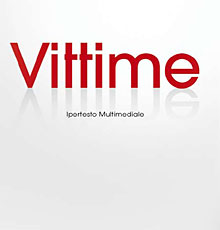
INTRODUZIONE DIDATTICA
- dal sito web dell’Associazione Italiana Vittime del Terrorismo
Lo scopo di questo ipertesto multimediale è di carattere informativo e didattico sul terrorismo politico che ha connotato un ventennio della recente storia italiana. Per molti motivi il fenomeno è stato quasi rimosso, sia a livello di dibattito politico che di analisi storica e culturale, riscuotendo solo recentemente una certa attualità editoriale.
Proprio dalle recenti pubblicazioni che hanno portato la testimonianza delle vittime e dei familiari superstiti di quegli anni, si presenta una antologia critica di brani che ripercorre per capitoli il ventennio 1968-1988; il tutto corredato da oltre 500 fotografie, filmati dal repertorio RAI e dai radiogiornali, nonché da un atlante storico dei principali fatti nazionali ed internazionali e da una elencazione biografica delle vittime.
La chiave di lettura proposta è quella della voce delle vittime. L’ipertesto non deve essere considerato come una tardiva, e comunque insufficiente, forma di compensazione verso coloro che per lunghi decenni hanno patito, oltre ad un generale silenzio, anche il disinteresse dello Stato. Esso è piuttosto una documentata rassegna ed una rivisitazione dell’intolleranza e della violenza politica in Italia.
Percorrendo l’ipertesto è quindi possibile articolare studi e riflessioni didattiche per:
a) recuperare/rielaborare la memoria dei fatti, molti dei quali rischiano l’oblio totale;
b) incrementare ed approfondire il livello di informazione/conoscenza sul fenomeno del terrorismo interno ed internazionale e le sue radici storiche e culturali;
c) incoraggiare e accrescere nei giovani lo sviluppo di una coscienza critica verso il fenomeno del terrorismo e le diverse forme di violenza in politica.
LE RADICI STORICHE E CULTURALI
Sull’origine storico-culturale del terrorismo, non trattata all’interno dell’ipertesto, segnaliamo le plurime suggestioni che si possono cogliere nell’evoluzione del terrorismo a partire dalla sua prima affermazione nel corso della rivoluzione francese, che può essere analizzato con l’ausilio di diverse discipline: dalla storia delle dottrine politiche alla sociologia, dalla filosofia alla letteratura, o discusso attraverso una delle più suggestive riflessioni sulla violenza politica che sia stata fino ad ora scritta: “L’uomo in rivolta” di Albert Camus.
«Il terrorismo moderno viene definito e battezzato da Robespierre, che è il primo a precisarne la funzione politica nell’accezione oggi ancora usata. Nel suo intervento alla Convenzione dice: “La spinta maggiore al governo popolare in tempo di guerra è data dalla virtù e dal terrore: il terrore senza virtù è fatale, e la virtù senza terrore è inerme”. Dopo la rivoluzione francese, tutto il terrorismo rivendicherà sempre sé stesso come strumento di giustizia».
(Lucia Annunziata, in “Anni di piombo, Il Piemonte e Torino alla Prova del Terrorismo”, Rubbettino 2007)
Una giustizia assoluta che pretende di saldare nella storia umana la virtù pura e astratta all’agire reale e concreto dei cittadini. Anche Albert Camus parte dal 1793, da Saint-Just che esclama: “O la virtù o il terrore”. «Pretendendo di costruire la storia sopra un principio di purezza assoluta, la rivoluzione francese apre i tempi moderni…». La sua riflessione si snoda tra filosofia politica e letteratura fino agli Anni Cinquanta e indica la sola virtù media umanamente perseguibile, tra l’assoluto virtuoso e il cinico realismo, per cui, nell’agire politico «non importa la causa difesa, sarà inevitabilmente disonorata dal cieco massacro di un innocente».
L’importante riflessione del premio Nobel Camus è stato dimenticato per decenni, al pari delle vittime, ma resta fermo e incancellabile nella sua cocente attualità: «La misura c’insegna che occorre ad ogni morale una parte di realismo: la virtù pura è omicida; e che occorre una parte di morale ad ogni realismo: il cinismo è omicida». È la dismisura a giustificare il terrore: infatti «il bene assoluto e il male assoluto, se vi si mette quanto occorre di logica, esigono lo stesso furore».
Una riflessione da sottoporre ai giovani sul loro modo di stare nella società, per cercare di prevenire il rischio che possano contrapporvisi in maniera violenta, anziché esercitare il diritto alla politica nel più completo rispetto della vita e delle idee degli altri.
Luca Guglielminetti
Anni di piombo

Catalogo dell’esposizione itinerante dell’Associazione Italiana Vittime del terrorismo AIVITER, intitolata “Anni di piombo. La voce delle vittime, per non dimenticare”, realizzata con il contributo della Regione Piemonte nel 2009. A cura di Luca Guglielminetti in collaborazione con l’associazione Leon Battista Alberti; design e grafica della Kore Multimedia.
Patrimoine de l’industrie

Patrimoine de l’Industrie/Industrial Patrimony est la revue de T.I.C.C.I.H., créée en 1999 par Louis Bergeron et Maria Teresa Maiullari-Pontois, publiée et financée; depuis le 1er janvier 2005, par Koinetwork geie, dans son rôle d’Agence Européenne de T.I.C.C.I.H. La revue est publiée en partenariat avec l’ I.C.O.M.O.S.
Il s’agit d’une publication semestrielle, paraissant fin juin et fin décembre, sous un format A4 d’environ 112 pages, sauf lorsqu’il s’agit de numéros spéciaux. Sous une double couverture en couleurs sont présentés des textes et des illustrations en noir et blanc.
Cette revue est la seule aujourd’hui qui aborde, à un niveau international et interdisciplinaire, les problèmes de la diffusion de la connaissance du patrimoine industriel, de la défense des valeurs dont il est porteur, dans tous les pays qui ont participé au mouvement multiséculaire du progèrs technique et de l’industrialisation, de la conservation, réutilisation et mise en valeur des témoignages matériels et immatériels qui constituent l’héritage de ce patrimoine.
Chaque numéro est structuré selon trois parties principales: la première, consacrée à une thématique spécifique; la seconde, de caractère monographique, accueille la présentation de cas particuliers (monuments, sites, paysages) ou d’expériences originales (dans le domaine de la muséologie, des projets) ainsi que d’actes de conférences; la troisiième comporte des comptes rendus de nouveautés éditoriales et des informations concernant les activités et projets mis en route ou suivis par Koinetwork.
Les collaborateurs de la revue sont principalement des membres du réseau de T.I.C.C.I.H. (membres du Board, représentants nationaux, adhérents institutionnels ou individiuels). Mais leur cercle ne cesse de s’élargir, grâce à la politique suivie par la Rédaction, visant à développer l’audience internationale de la revue – et à une attention portée constamment à de nouvelles aires géographiques, à de nouvelles spécialités thématiques, à de nouveaux auteurs issus de champs disciplinaires différents et complémentaires.
Une place importante a été faite, au cours des années, à des articles traitant de sujet italiens – à des auteurs, à des sites, à des expériences importantes dans ce pays.
Dans l’ensemble, la préoccupation constante de la revue a été d’accompagner l’extension et le renforcement de l’intérêt pour le patrimoine industriel dans tous les pays de l’Europe et d’autres continents – en particulier de l’Amérique Centrale, de l’Amérique Latine et de l’Asie, continents sur lesquels des comités nationaux de T.I.C.C.I.H. sont nés et se sont structurés au cours des vingt dernières années, favorisant ainsi la renaissance d’une activité culturelle et scientifique remarquable, dans le champ de cette thématique particulière.
La revue s’efforce de constituer une fenêtre ouverte sur le monde dans le domaine qui lui est propre, et elle a besoin d’auteurs et de lecteurs assidus et actifs, pour pouvoir rester fidèle à ses principes constitutifs et à ses finalités institutionnelles, et pour répondre à son ambition d’élargissement des thématiques et de resserrement des liens entre patrimoine, enseignement et culture.
(1) Groupement européen d’intérêt économique, créé en 2002 et dirigé par Maria Teresa Maiullari-Pontois, membre du TICCIH Board of Trustees. Koinetwork a repris le financement de la publication, initialement assuré grâce à des subventions publiques, notamment en provenance du Ministère Français de la Recherche, puis par l’Ecomusée de la Communauté Urbaine Le Creusot-Montceau, lequel a mis fin à son soutien à l’occasion de la fermeture de son programme international en 2004.
| Members of the Committees / Membres des Comités |
| COMITÉ DE PATRONAGE Dr Henry CLEERE Former World Heritage Coordinator (Grande Bretagne) Jack LANG Ancien Ministre de l’Education Nationale Ancien Ministre de la Culture (France) Le Directeur du Rheinisches Industriemuseum (Allemagne) Eusebi CASANELLES i RAHOLA , Directeur du Museù de la Ciència i de la Tecnica de Catalunya T.I.C.C.I.H. President (Espagne) Richard O’CONNOR Director of HAER (Etats-Unis) Le Directeur de l’Architecture et du Patrimoine Ministère de la Culture (France) Le Président d’ICOMOS-France Sir Neil COSSONS Former President of English Heritage T.I.C.C.I.H.Honorary President for Life (Grande-Bretagne) Le Président de la Facoltà di Architettura n°1, Politecnico di Torino (Italie) COMITÉ SCIENTIFIQUE Christine AGRIANTONI Université de Volos et Centre de Recherches Néohelléniques d’Athènes (Grèce) Ewa BERGDAHL National Heritage Board – Head of Division Cultural Tourism (Suède) Keith FALCONER Royal Commission on the Historical Monuments of England (Grande-Bretagne) Giovanni Luigi FONTANA Professeur à l’Université de Padoue T.I.C.C.I.H. Board Member (Italie) Piotr GERBER Professeur à l’Université Technique de Wrócław (Pologne) André GUILLERME Professeur au Conservatoire National des Arts et Métiers (France) Stephen HUGHES Royal Commission on the Ancient and Historical Monuments of Wales (Grande-Bretagne) Emory KEMP Professeur émérite à l’Université de Morgantown, West Virginia (Etats-Unis) Belem OVIEDO GÁMEZ Directrice du Musée de la Mine, Pachuca (Hidalgo) T.I.C.C.I.H. Board Member (Mexique) Marie NISSER Professeure à l’Ecole Supérieure Royale de Technologie de Stockholm T.I.C.C.I.H. Honorary President for Life (Suède) Akira OITA Professor at the Shizuoka University of Art and Culture (SUAC) (Japon) Denis WORONOFF Professeur émérite à l’Université de Paris – I (France) Helena ZEMANKOVA Professeur à l’Université Technologique de Brno Koinetwork geie member (République Tchèque) COMITÉ DE RÉDACTION Louis BERGERON T.I.C.C.I.H. Honorary President for Life Directeur de la Publication Koinetwork geie.member (France) Maria Teresa MAIULLARI-PONTOIS Ingénieur d’études, Ecole des Hautes Etudes en Sciences Sociales, Paris T.I.C.C.I.H. Board Member Koinetwork geie Manager (France) Tuija MIKKONEN Researcher, Lappeenranta University of Technology Koinetwork geie Member (Finland) Patrick VIAENE Président de S.I.W.E. (Belgique) Luca GUGLIELMINETTI Koinetwork geie member (Italie) COMITÉ DE LECTURE Dag AVANGO Royal Institute of Technology in Stockholm T.I.C.C.I.H. Board Member (Sweden) Serge CHASSAGNE Professeur émérite à l’Université Lumière – Lyon II (France) Gracia DOREL-FERRÉ Présidente de l’Association pour le Patrimoine Industriel de la Région Champagne-Ardennes – APIC (France) Dominique FERRIOT Professeure au Conservatoire National des Arts et Métiers Présidente d’ICOM – France (France) José-Manuel LOPES CORDEIRO Professeur à l’Université du Minho à Braga T.I.C.C.I.H. Board Member (Portugal) Michael MENDE Professeur à l’Ecole Supérieure des Arts Plastiques, Braunschweig (Allemagne) Györgyi NEMETH Professeure à l’Université de Miskólc T.I.C.C.I.H. Board Member (Hongrie) Gregorio RUBINO Professeur à l’Université Federico II, Naples (Italie) |
